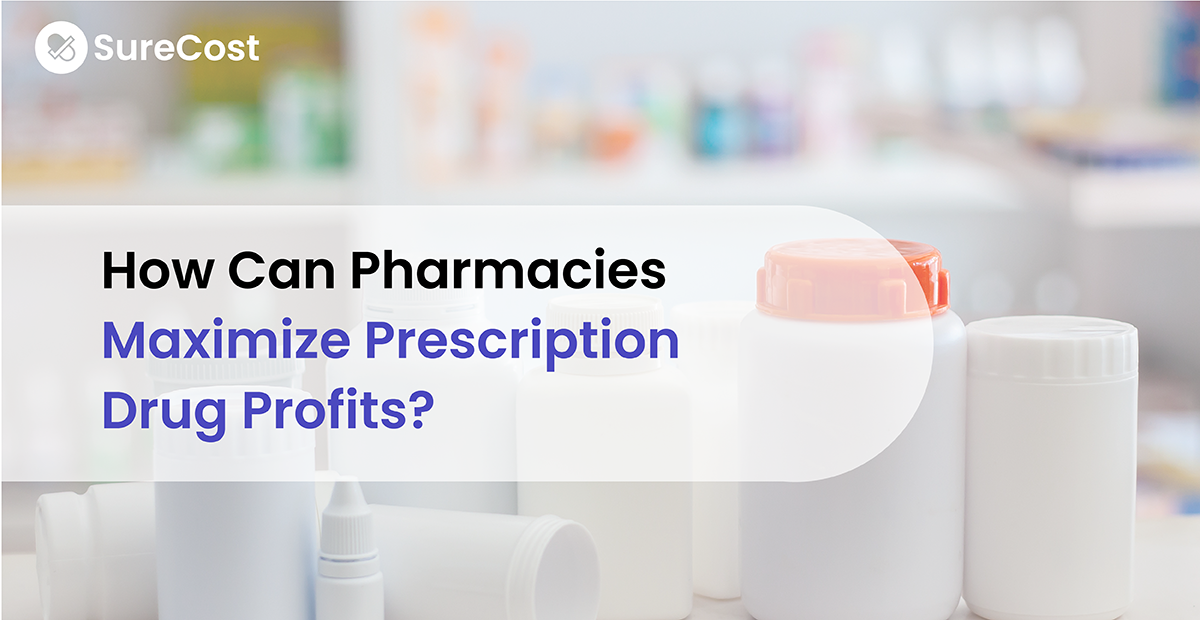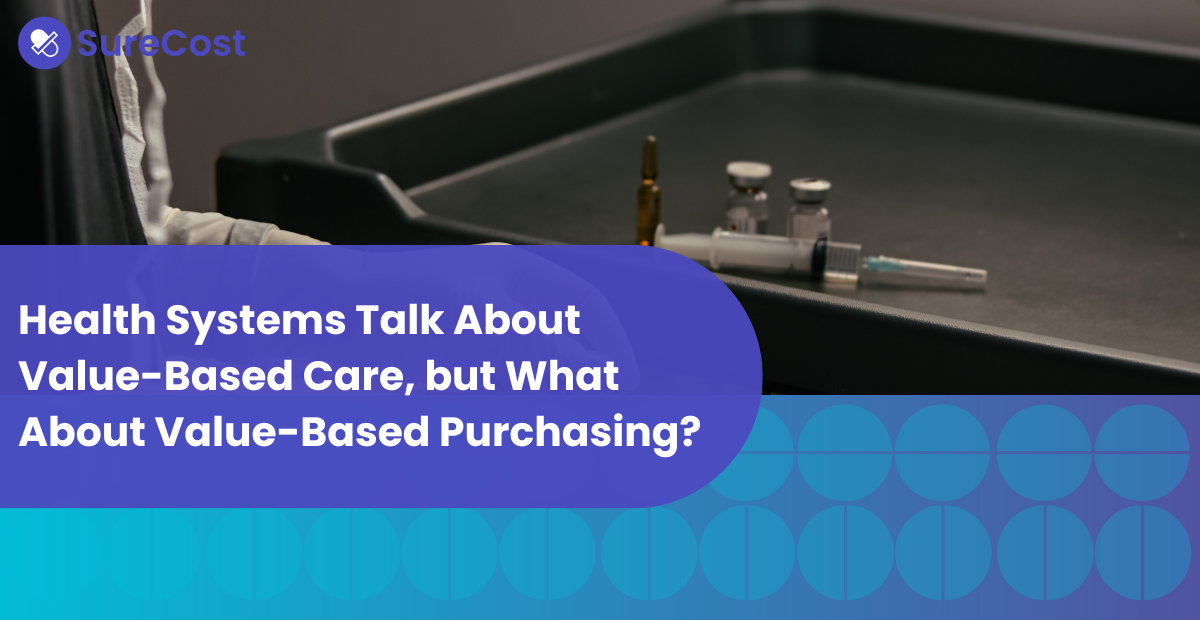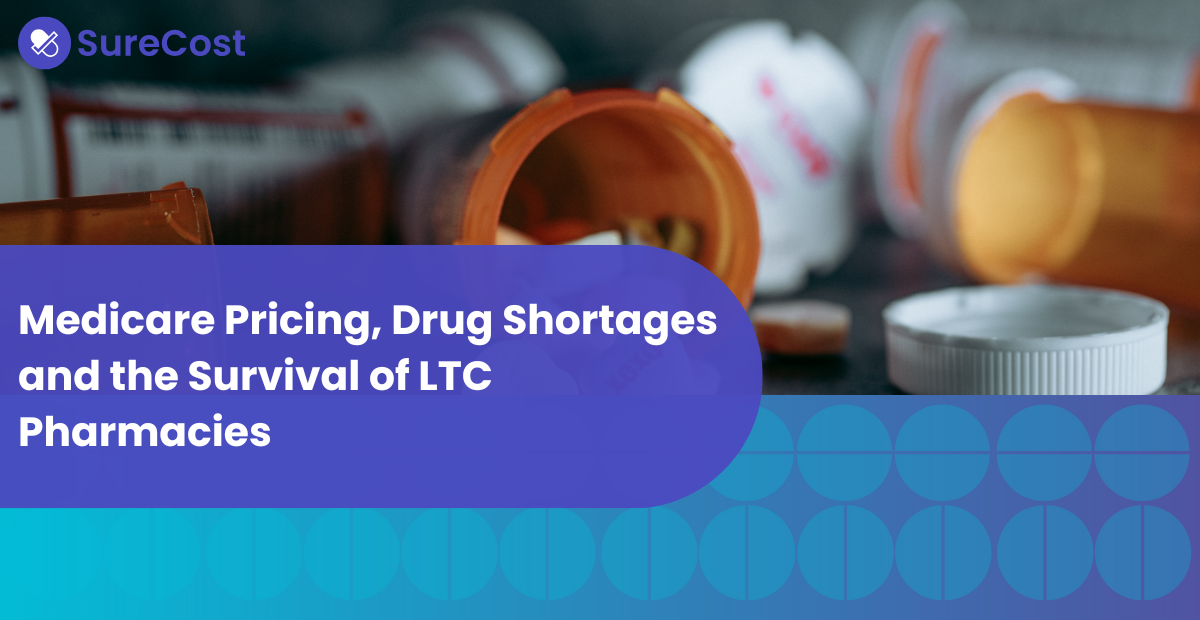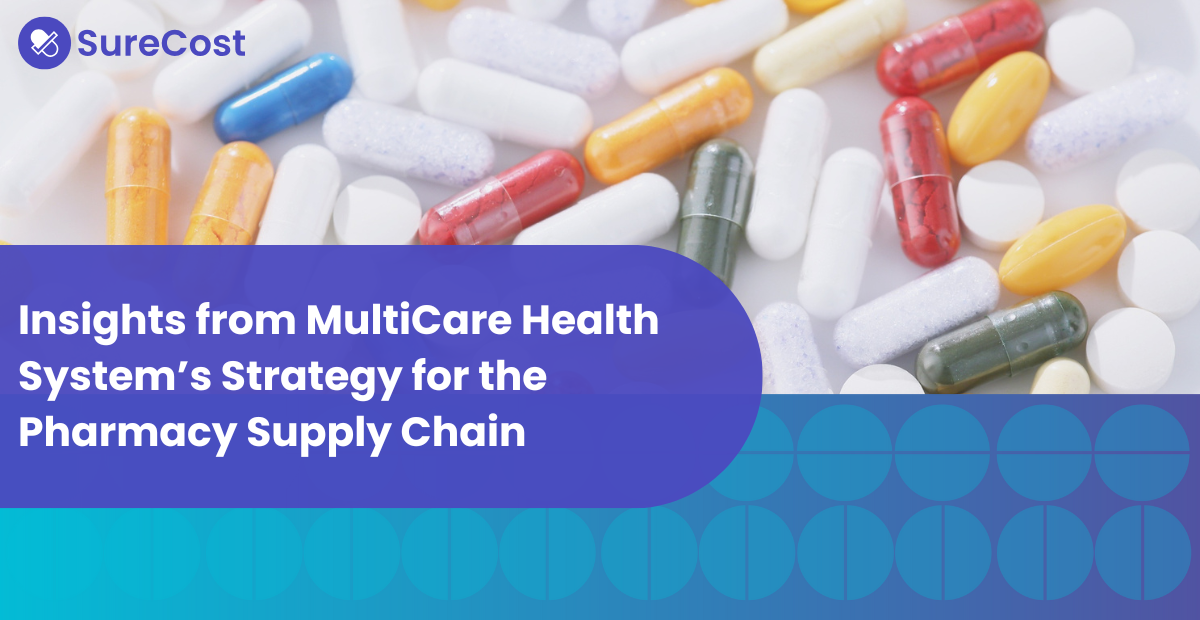A Preview of Our Newest White Paper
Cost of goods sold is one of the most effective financial levers for a pharmacy. Up 70 to 80 percent of a pharmacy’s costs are from COGS. Reducing it by even a few percentage points can help offset additional costs or significantly add to your profitability.
Unfortunately, high drug prices, supply issues, overseas volatility and expenses to bring on new staff amidst staffing shortages are just a few factors compromising your pharmacy’s profitability.
Our latest white paper, How to Maximize Prescription Drug Profits in Today's Purchasing Environment, outlines several strategies to keep your pharmacy competitive so that you can continue to serve your patients well into the future.
This blog post will introduce you to strategies for technology, process and service providers that drive profits from prescription drugs. For the most complete guidance, including real-world cases and quantitative examples, download the white paper.
Optimize Your Purchasing
Maybe you’ve negotiated the best prices and always find the best purchasing options. You still need to confirm trade partners consistently honor those agreements.
Whether you’re buying from a single wholesaler, multiple secondaries or through a GPO and no matter how great their prices look on paper, it doesn’t matter if they’re sending you the wrong items or invoicing you at a higher price.
Suppliers can make mistakes in their billing. They may even substitute products without informing you. For example, you order a specific drug, but a wholesaler has a sub program and gives you an equivalent. You need the ability to spot that substitution, assess the cost against what you originally purchased and, most importantly, determine whether that drug still meets your patients’ needs.
Make sure that you have a system to confirm that you’re always getting the right product at the correct quantity at the agreed-upon price when you need it. That visibility is critical to your bottom line. It means validation at each step—purchasing, invoice and receiving—in real time. The sooner you can catch a discrepancy, the quicker you can correct it.
That visibility will also provide a strategic overview of your utilization and purchasing. Ordering too much of a product means having too much on hand and potential overstock, returns and expired products, all of which can impact your margins. But if you're not buying enough, then you might not have that medication for your patients or will need to do a partial fill. That affects both their medical care and level of satisfaction as a customer.
Having a system to analyze usage against purchasing will help you understand what you're purchasing in terms of quantity. And it’s going to be more precise than just shaking the bottle or relying on habit.
For example, maybe you’re buying bottles of 500 when you should be buying bottles of 100. Or price points for generic equivalents mean you should move to a bigger package size. A purchasing solution can analyze those variables, allowing you to lock items down while maximizing your spread and checking vendor compliance.
Unfortunately, given the value of these products outside of authorized vendors, you want to make sure you can evaluate potential shrinkage. Blind spot checks of inventory help, but you have to review utilization. If you're buying products without dispensing them, that’s a red flag, and it’ll flow through to your P&L. You’ll see your gross profit shrinking even while your purchasing process or reimbursement doesn’t change.
That’s why it’s so important to report accurate COGS on a regular basis. It’s a critical piece for profitability, but more importantly, none of us want substances escaping the chain of custody.
There are also sophisticated ways to track returns and ensure you're getting what is actually due to you based on what you paid for that product. Knowing what credits to expect and which credits are outstanding should inform your monthly P&L. It will also assist your accounting department.
Improve Purchasing Decisions
Visibility into your purchasing process and relationship enables you to analyze your purchasing patterns, derive better procurement strategies and discover more savings for you and your patients while increasing profitability on prescription drugs.
Even if you’re purchasing from a single vendor, just comparing multiple listings for one drug in a single catalog can be a tedious and time-consuming process. It will exhaust you and your staff, and you’re still not going to always find the true best option. If you’re working with secondary vendors, a group purchasing organization (GPO) or indirect contracts, that just compounds the challenges.
As just one example, we saw an NDC listed on both a primary vendor’s source program and a GPO contract. In one case, the primary vendor’s catalog price for their source program was $1.90. But the GPO’s contracted price was $1.59. Depending on your purchasing volume, that could be a significant overpayment. But with the right tool to spot it before you place that purchase order, it’s a huge saving.
You’ll have the power to compare multiple items across all of your contracts and find the best option based on multiple factors such as price, rebate modeling and compliance—with the solution doing the heavy lifting for analysis and comparison.
Our white paper, How to Maximize Prescription Drug Profits in Today's Purchasing Environment, shows you how to select that tool and what to look for in a purchasing solution.
We also show you how to build internal accountability into your system so you always know what you purchased from which vendor and why you paid that price. You’ll also gain external accountability for vendors so that you always receive the right amount of the correct product at the agreed-upon price and accurate, timely reimbursements.
Strengthen Your Purchasing Portfolio
Your primary vendor is integral to your operation, including your underlying profitability. That’s why it’s crucial to effectively structure your vendor contract with them.
Our white paper gives you a list of factors to consider when evaluating your primary vendor agreement, including flexibility to diversify your purchasing portfolio in case your primary can’t supply a product. We also show you why this leads to substantial savings for your pharmacy that you can pass along to patients.
Even if you only work with a primary wholesaler and enjoy a perfect relationship with them, you can still use secondary vendors to find other options or ensure adequate supply.
This white paper will show you the:
- Benefits of working with secondary vendors for any pharmacy
- Tips to make sure secondary vendors meet the needs of your pharmacy and patients
- Tactics to expand your purchasing portfolio while ensuring compliance
- Tools to leverage transparency into your expanded range of purchasing options
Even as you optimize your primary agreement and expand your purchasing portfolio, you don’t need to compromise your relationships with existing vendors or worry about compliance. But you need the right solution to manage it all so you don’t add more work for you and your team. Read our white paper to learn more.
Learn the Complete Strategy
There are plenty of factors negatively impacting the profitability of prescription drugs. But your pharmacy isn’t stuck.
Our white paper covers several strategies to raise prescription drug profitability:
- Structuring contracts to expand your vendor portfolio
- Finding comparable products for patients at competitive rates
- Understanding how each purchase impacts compliance
- Reviewing dead net cost on purchases, including rebates
- Verifying receipt of the right product at the expected price
- Integrating electronic procurement across all vendors
Be sure you have all the information and options needed to drive profitability and flourish in the face of industry challenges. Read our white paper.








.png)